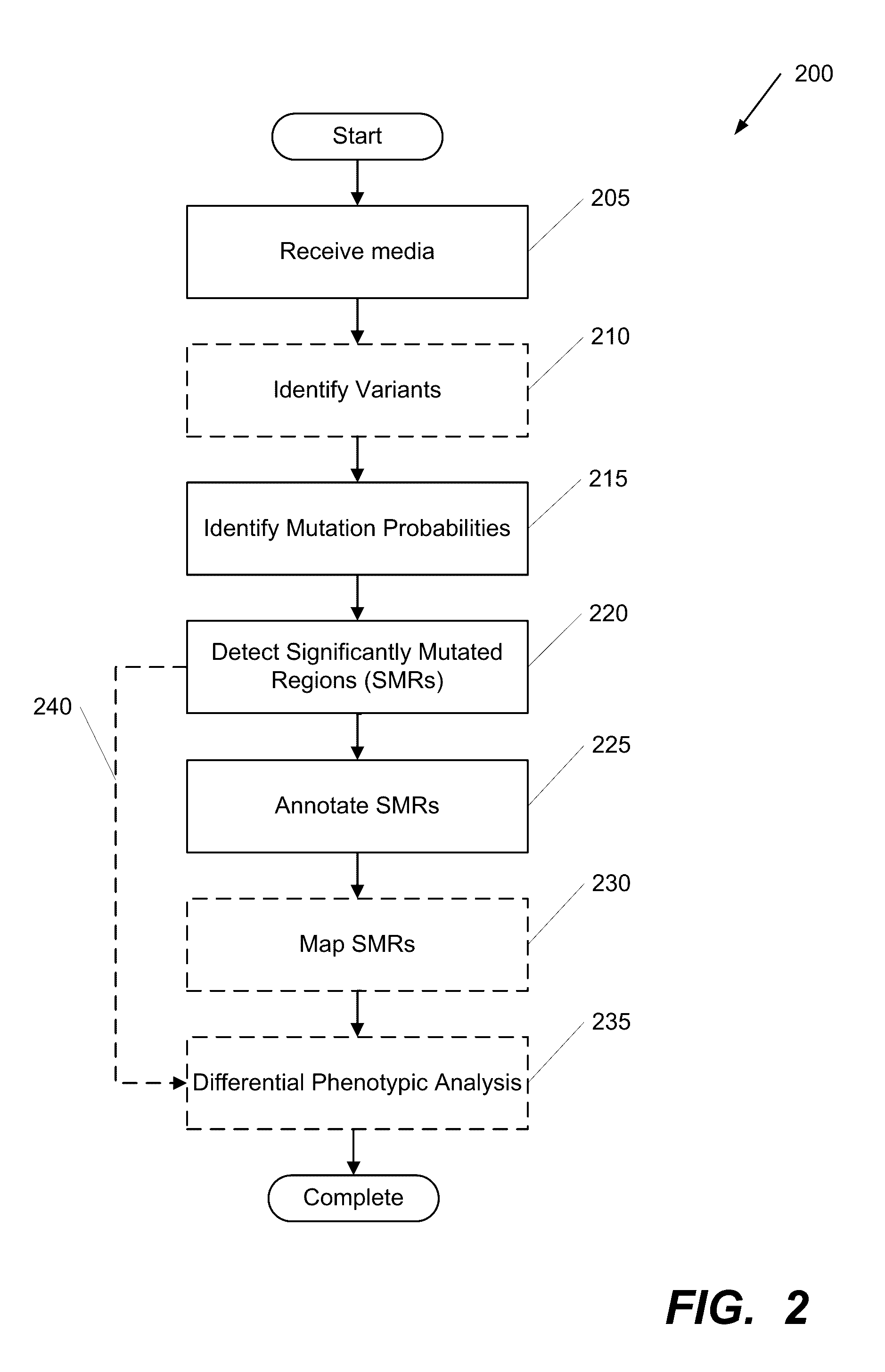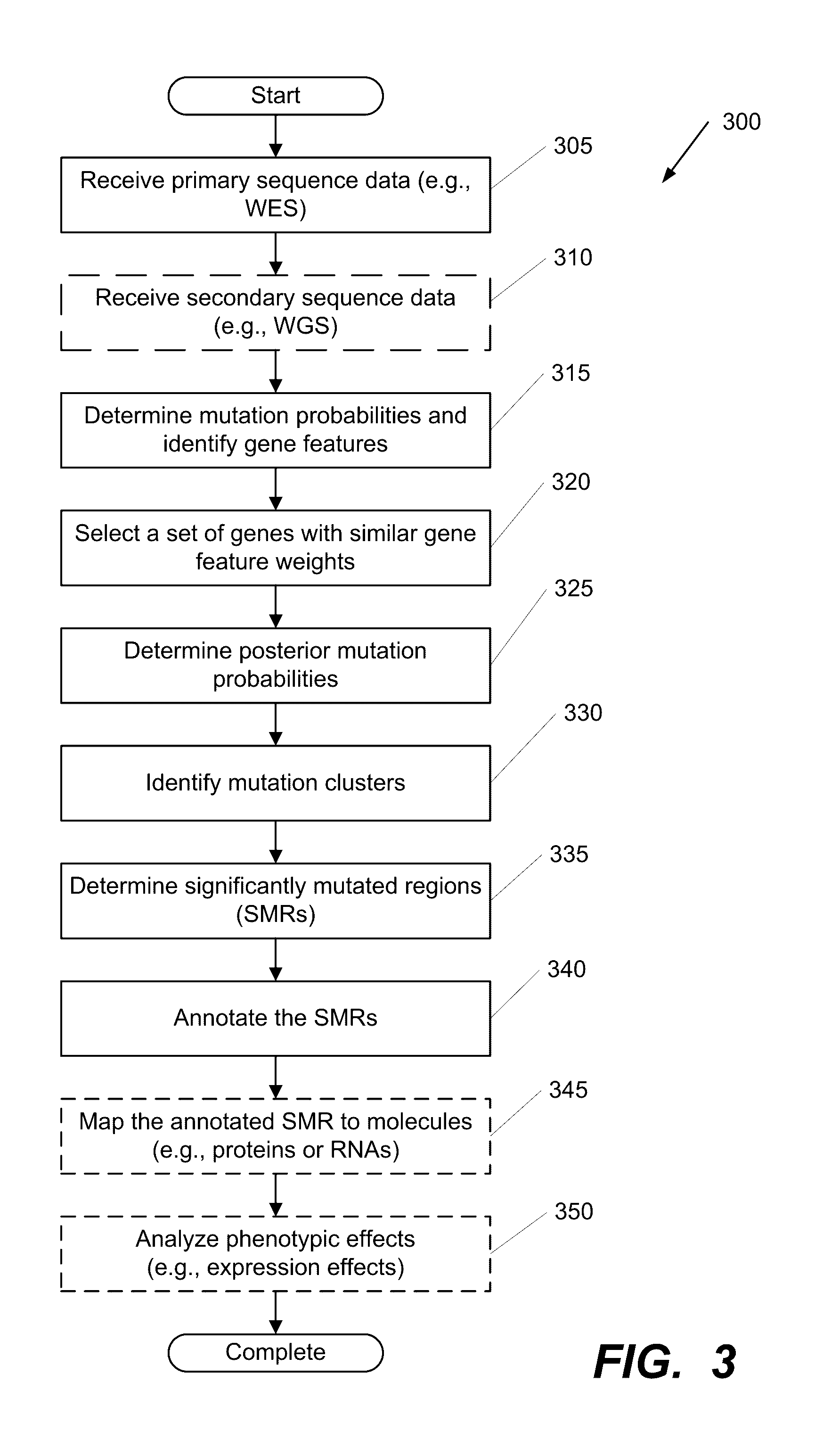Systems and Methods for Multi-Scale, Annotation-Independent Detection of Functionally-Diverse Units of Recurrent Genomic Alteration
a genomic alteration and annotation technology, applied in the field of computer-aided diagnostics, can solve the problems of largely unknown ways in which variants contribute to diseas
- Summary
- Abstract
- Description
- Claims
- Application Information
AI Technical Summary
Benefits of technology
Problems solved by technology
Method used
Image
Examples
Embodiment Construction
[0043]Turning now to the drawings, systems and methods for detecting, annotating and mapping significantly mutated regions (SMRs) across a genome in accordance with embodiments of the invention are illustrated in FIG. 1. The SMR detection, annotation and mapping systems and methods of several embodiments identify regions of a genome containing clusters of genetic mutations independent of any pre-existing annotation(s).
[0044]The systems and methods of several embodiments of the invention detect and annotate variably-sized sets of residues in genomes (heretoforth referred to as genomic regions) recurrently altered by somatic mutations (significantly mutated regions, or SMRs). The SMR detection and annotation systems and methods systematically identify relationships amongst genome sequence data, such as whole exome sequence and whole genome sequence data (among other types). The systems and methods use these relationships to provide several functionalities that are useful for detecting...
PUM
| Property | Measurement | Unit |
|---|---|---|
| FDR threshold | aaaaa | aaaaa |
| false discovery rate threshold | aaaaa | aaaaa |
| density reachability parameter | aaaaa | aaaaa |
Abstract
Description
Claims
Application Information
 Login to View More
Login to View More - R&D
- Intellectual Property
- Life Sciences
- Materials
- Tech Scout
- Unparalleled Data Quality
- Higher Quality Content
- 60% Fewer Hallucinations
Browse by: Latest US Patents, China's latest patents, Technical Efficacy Thesaurus, Application Domain, Technology Topic, Popular Technical Reports.
© 2025 PatSnap. All rights reserved.Legal|Privacy policy|Modern Slavery Act Transparency Statement|Sitemap|About US| Contact US: help@patsnap.com



